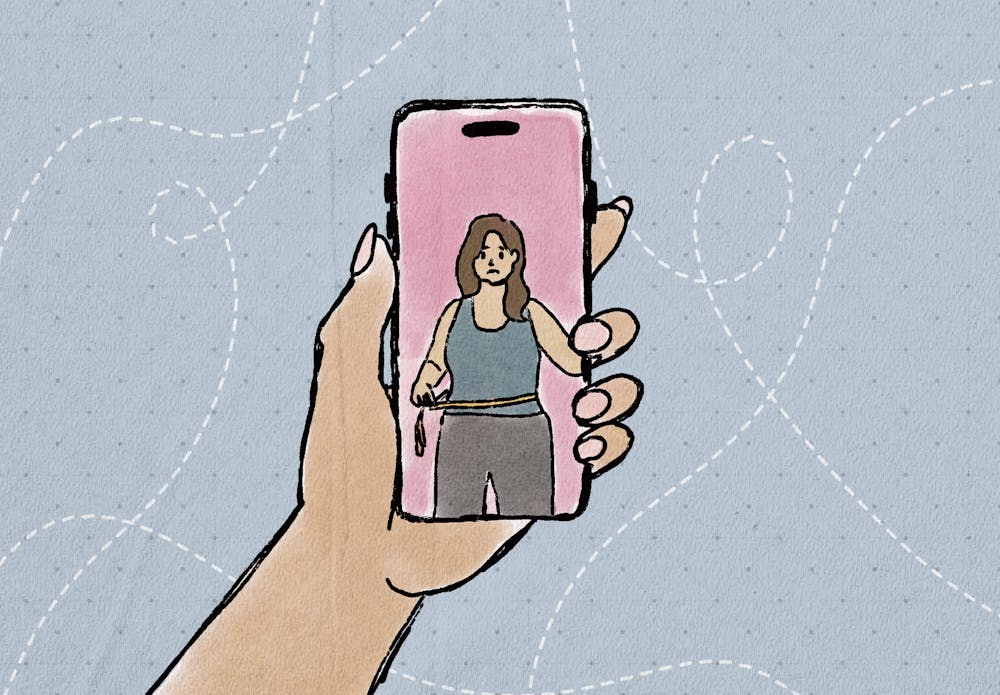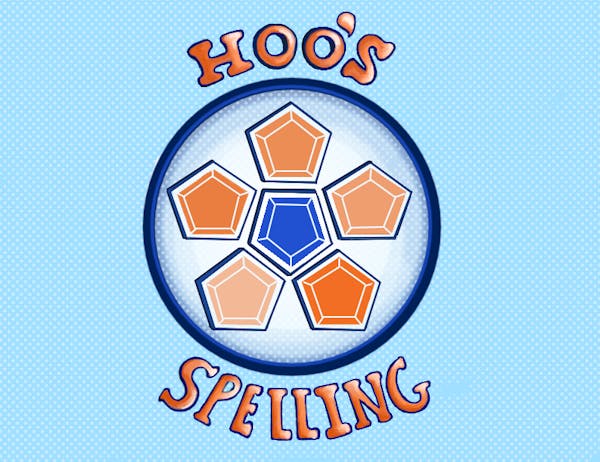For women in this day and age, it feels like trends run everything, and unfortunately, the University is not immune to this. In the dining hall, everyone suddenly wants the same O’Hill protein yogurt bowls for breakfast. Crowds line up at the AFC for the workout circuits that TikTok promises will “tone” in just three weeks. Even in the library, the unofficial uniform — PARKE sweatshirts, Lululemon flares and Stanley cups in hand — makes it look like students coordinated their outfits over GroupMe.
Somewhere in that swirl of yogurt, stairmasters and matching sweats, I forgot that my body isn’t supposed to be part of the trend cycle, too. But how could I think otherwise when women have been taught to think that way for centuries?
Despite knowing how dangerous and inconsistent the “wellness” or “thinspo” discourse can be, I’ve wholly fallen into it. I’ve downloaded calorie trackers and running apps, convinced myself that eating “clean” to an obsessive extent was self-care — when it was really self-surveillance — and spent way too much time comparing my reflection in the mirror to someone else’s highlight reel.
On the surface, it could sound like progress — empowerment even — but while I told myself I was doing all of this for my “health,” in reality, I just wanted to look like someone who was effortlessly in control.
While body trends are constantly evolving — at a faster rate than ever due to today’s media — they’re always just a new filter on the same old impossible standard. In the 1950s, the hourglass silhouette was the sole ideal. By the 1990s, that had shrunk into “heroin chic,” all sharp bones and hollow features. And today, with early-2000s “thinspo” having resurrected and Brandy Melville’s one-size-fits-none aesthetic, the body has just been revamped again, swapping out the “strong is the new skinny” fitness craze of the 2010s for another impossible ideal.
These aren’t isolated trends, they’re just different eras of the same problem. We talk about body types as if they’re products — marketed, sold and eventually declared obsolete. But contrary to that toxic pattern, your body isn’t disposable like the fast-fashion top you wore twice.
In navigating this perception myself, I’ve found that the more I scroll, the easier it becomes to internalize an algorithm’s idea of what “health” or “beauty” should look like. Social media has rebranded “dieting” as “wellness” and “skinny” as “strong.” Women, specifically, are constantly told by influencers, wellness culture and even the so-called body positivity movement that our bodies are “works in progress.” But it’s never clear what “ideal body type” we’re progressing toward — only that we haven’t reached it yet.
Whatever unrealistic standards are promoted on social media are only worsened by the culture of the University — competition is our default setting. We compare grades, internships and even how early we wake up to study. Why wouldn’t that mentality spill into the way we think about our bodies? I’ve caught myself using the same language I use for school when I talk about fitness, saying things like, “I just need to be more disciplined,” or “I need to get back on track,” as if my body were another assignment I’d fallen behind on.
When everything else felt uncertain or out of reach, I found myself turning self-improvement into a form of self-control. The gym became less about endorphins and more about proof — a tangible sign that I was doing at least one thing right, even if everything else felt wrong.
Recently, though, I’ve realized that I don’t actually have to keep falling into this trap. I’ve been slowly learning that self-compassion, not self-criticism, leads to more sustainable health and well-being. In other words, I’ve found that hating myself into “discipline” doesn’t work — it's just exhausting. And at a school already filled with overachievers, maybe exhaustion shouldn’t be our default emotional state.
I’ve started trying to let go of the idea that my body has to mean something — that it has to be proof of my work ethic, my willpower or my ability to keep up. Internalizing this is hard, especially in a culture that monetizes insecurity, but there’s something freeing in rejecting the narrative altogether. I can move my body because it feels good, not because I want to “fix” it. I can eat because I’m hungry, not because a TikTok influencer told me to hit my macros. I can simply exist without optimizing.
Because the truth is that my body — and yours — isn’t a micro-trend or a seasonal accessory, and it’s definitely not a group project for the algorithm to grade. Trends will keep rotating, but our bodies don't have to shift with them. In fact, I actually think that the most radical thing we can do on a campus obsessed with achievement is to stop treating our bodies like they need constant aesthetic upgrades.
Maybe if we just accepted this instead of starving and counting and staring, we’d finally have the energy to focus on more important things, like prepping for another week of midterms in Clem. Or perhaps, instead of squeezing long workouts into a short break at home, we would spend quality time with our families. Or, at the very least, we could just live in our bodies because they’re ours, not because they’re trending.







